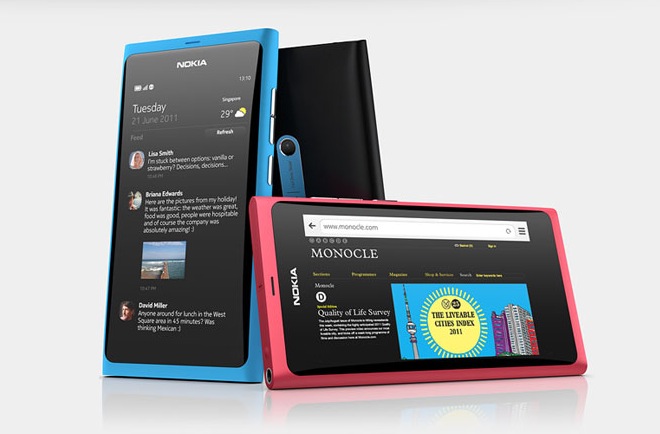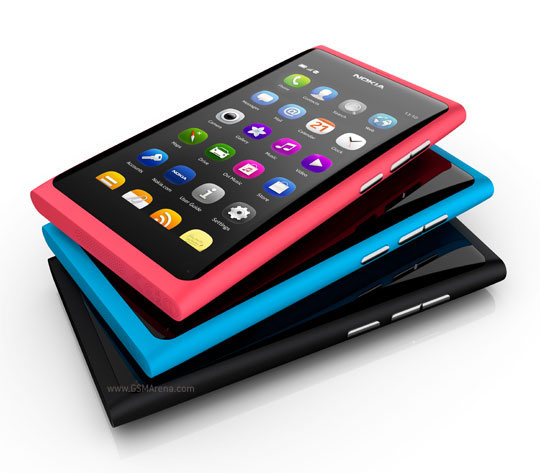
For the first time in years, Nokia owned the tech news this week as they unveiled their first and possibly last, MeeGo phone, the Nokia N9, on Monday. This phone, based on Nokia's MeeGo partnership with Intel, will likely receive no support from the developer community and will probably exist as a one-off project by Nokia, thereby fulfilling Nokia's obligations to Intel and Meego before they transition entirely to Windows Phone. The Meego implementation on the N9 is very attractive and shows a number of good ideas about how tasks on a smartphone should be managed. With such low expectations for Meego, the N9 surpassed even MeeGo's more ardent supporters.
In addition to excitement about the software, reviewers everywhere were excited to see the direction Nokia is going with hardware. Could this be an indication of what the first Nokia Windows Phones will look like? The answer is an unequivocal yes, as yesterday Nokia showed off a prototype of the same basic hardware running Windows Phone Mango, codenamed "Sea Ray." This controlled leak set off another firestorm of questions about what Nokia was doing and what message it's trying to convey. In the end, it's not difficult to see what Nokia is trying to say, but the typical distraction of a good demo is causing some serious over-reaction by the tech press.

Every so often, devices that aren't set to hit the market are shown off in controlled environments to the awe of the press. In 2011, it's not difficult to create a basic UI that looks attractive. It's similarly easy to get demo code to run well for the few tasks you're showing off. What's disappointing is that so many people seemed taken with the software to the point that they questioned if Nokia was making the right decision to move to Windows Phone. Even the typically skeptical and savvy Vlad Savov was so overwhelmed that he wrote an editorial opining that Nokia may have jumped ship too early. If Nokia's own OS is this good, then why be dependent on Microsoft by using Windows Phone?
The truth is, we have no idea how good this is. We saw only basic tasks and apps. We don't know how it runs in the real world. We don't know how the live multitasking affects battery life. We don't know if it requires more power to have a screen that can be woken up by a double tap. What's worst of all is we don't know what type and quality of SDK Nokia will give to developers. Is it really competitive with the SDK of an iOS or Windows phone? These are all questions that might have served the press better when they saw the Palm Pre for the first time. There are a million unanswered questions but only a few demo videos that look good. Nokia would be crazy to be going with MeeGo at this point when high-quality mobile OS's like Windows Phone and WebOS are struggling to stay relevant in a dualistic iOS and Android world.
Way back in December, we predicted that MeeGo could still become a force in mobile. That prediction was, to put it mildly, a little bit off. The mobile world is moving too fast for an unfinished platform at this point. Nokia and Microsoft are both dependent on making an impact with Windows Phone soon or not at all. Nokia knows that MeeGo is a dead-end in the phone space, which is why they had no compunction against throwing the N9 under the bus by leaking the "Sea Ray." They may as well be saying, "So you liked the N9 hardware, huh? Well, here's a camera key and an OS that we'll actually support!" They may have gone about it an odd way this week, but that's beside the point. In the end, they had to release the N9, but that doesn't mean that they're not going to make perfectly clear that they intend to make Windows Phone their focus going forward.
…and they should.